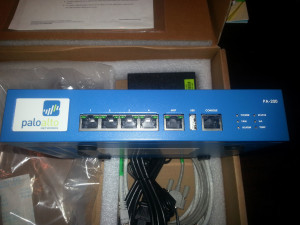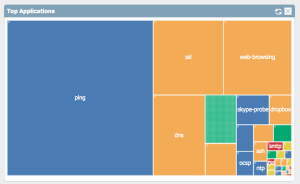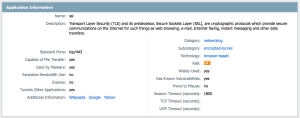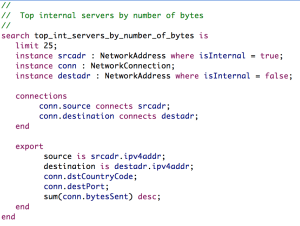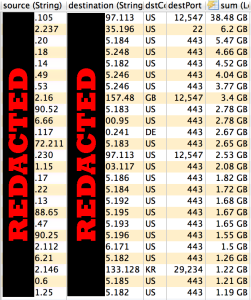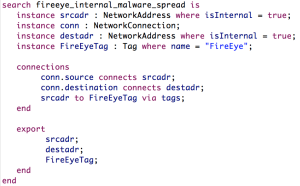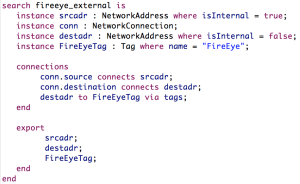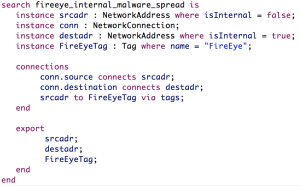I am going to start out here by saying that I do not now, nor have I ever, held the title of Chief Information Security Officer (CISO). That having been said, I do effectively fill this role as the Information Security Program Owner for a large, $1B+ per year, public company. Some of what follows will be diatribe on my current role and what I would change if given the opportunity. Some of it will be based on general observations of how I’ve seen other companies handle internal security. What follows are six reasons why your company needs a Chief Information Security Officer (CISO).
Let’s start out with how I got my current title. Early in my career I was a *nix Administrator working for a number of different companies. I did everything from working as support at a website hosting company to building systems as a military contractor. Even though my official title never had anything to do with security, I have always had a passion for it, so I always found a way to make it part of my job. Fast forward to about seven years ago where I got a job as a Web Systems Engineer at my current employer. I quickly realized that there was nobody handling security for our systems so I decided to shoulder that responsibility. I began by running Qualys scans, analyzing the results, and fixing the vulnerabilities. Since this was not my primary role, it all of this work was performed in about 5% of my overall time spent, but I was able to keep good metrics and show fantastic results over time. After several years of working like this, I finally made the decision to dedicate myself to security full-time. I got a job offer from another company to be a Security Engineer, but decided to see if my current company was interested in allowing me a similar move. After some discussions and a few presentations on what the job would entail, I was officially allowed to spend 100% of my time on security. The only catch was that I was now responsible for our IT SOX testing as well. Now came the question of what to call my new role. The title “C” anything is reserved for our executives so that took CISO off the table immediately. Sad. I was also not allowed to use the term “Manager” in my title since that indicated having people underneath me. Even sadder. I finally settled on “Information Security Program Owner” as it indicated an ownership role in security (as close to Manager as I could get) while staying away from those other non-sanctioned titles.
Alright, so what does any of that have to do with needing a CISO you ask? To start with, I was the only security professional in the entire company of roughly 5,000 employees at the time. While officially my purview was in the area of IT security for the enterprise, the lack of any other experts quickly made me a hot commodity. I was asked to participate on various architecture teams, several teams having to do with regulatory compliance, and even to consult with our R&D teams on product security from time to time. I’d like to believe that it was because I am so awesome that people couldn’t get enough of me, but the God’s honest truth is that the entire company had a need and desire for security and there wasn’t anyone else to assist. Which leads me to the first reason why your company needs a Chief Information Security Officer:
Reason #1: By definition, the CISO is where the buck stops as far as security is concerned for your organization. It is the CISO’s job to make sure that security is a concerted effort and that your efforts are not inefficiently duplicated in multiple business units. Without a CISO, you may may have operational security, but you likely lack direction or a long-term plan for an actual security program.
Now, while my title says “he owns the security program”, the fact is that I am not officially a manager or executive. Thus, on an official level, I pull about as much weight as any other individual contributor in the organization. It’s a precarious position to be in. On one hand I’m charged with ensuring the security of everyone and everything in the company. Sometimes this can require being the bad guy and telling people their stuff is broken. On the other hand, I don’t hold enough power to actually force any action that others don’t actually want to take. Perhaps I’ll write a future post about how I’ve managed to still get things done despite this dilemma, but for now this leads me to the second reason why your company needs a Chief Information Security Officer:
Reason #2: Designating one of your senior security resources as the CISO is a form of empowerment. You are making a statement that they are the person that you trust to make informed security decisions for the organization. It helps if you can have them report to another C-level executive, like the CFO, but the most important thing here is the title as Chief Information Security Officer says that they are in charge of everything security (everything Information Security if you want to get technical) for your organization. This helps tremendously in ensuring that security is still a priority when business turns political.
When you hear the title Chief Information Security Officer, what do you think of? Maybe the IT guy who handle the IPS system? The guy who goes running around when a system is infected with malware? Maybe even the guy who wrote the Information Security Policy if you’re lucky? Your CISO should be all these things and so much more. This leads me to the third reason why your company needs a Chief Information Security Officer:
Reason #3: Your CISO is all things security. Wikipedia does a great job listing some of the many roles of the Chief Information Security Officer so I’m just going to steal them and list them here:
- Information Security and Information Assurance
- Information Regulatory Compliance (PCI, SOX, HIPAA, etc)
- Information Risk Management
- Supply Chain Risk Management
- Cybersecurity
- Information Technology Controls
- Information Privacy
- Computer Emergency Response Team
- Identity and Access Management
- Security Architecture
- IT Investigations, Digital Forensics, and eDiscovery
- Disaster Recovery and Business Continuity Management
- Information Security Operations Center
- PR
Obviously one person cannot handle all of these things which is why most companies have a team of security professionals (ie. Information Security Officers) who report up to the CISO, but this should give you an idea as to the wide scope of what the CISO is responsible for. Chances are that if you don’t have a CISO, then many of these activities aren’t happening. Even worse, the ones that are happening likely aren’t aligned with your business objectives. It’s tough to justify spending any money on a program when it performs activities ad-hoc and completely separate from your business. Which leads me to the fourth reason why your company needs a Chief Information Security Officer:
Reason #4: Your CISO is a business executive that spans into the technical world of security as well. They should be involved in the business decisions of the company so that they can ensure that the company’s security activities are well-aligned with the projects that the business is undertaking.
Hopefully, your senior security professional is an extremely valued member of your team. If you are holding off on giving them an official Chief Information Security Officer title, then you are doing both them and your company a disservice. Security companies are organizing events all the time that are targeted at these executives who control the security purse strings. Sometimes they call them CISO Roundtables, Summits, or otherwise, but the gist of it is that they are a form of education for the CISO and provides them with the opportunity to network with other security professionals in the area, all on somebody else’s dime. The catch is that you’re only invited if you’re a CISO. This leads me to the fifth reason why your company needs a Chief Information Security Officer:
Reason #5: The title of CISO is synonymous with “the person in charge of security” for your company and worlds of opportunity open up for them when you bestow upon them that title. It means free lunches, free trainings, and a host of other perks that unfortunately aren’t available with a title like “Security Manager” or “Senior Security Engineer”. Think of it as a job perk that doesn’t cost your company a thing.
Before I wrap this up, I have one final reason why your company needs a Chief Information Security Officer, but it’s certainly not for everyone. Occasionally, you’ll find a person both technically talented as well as someone who has an affinity and desire to do public speaking. If this is your senior security person, then it’s time to lock them down as they have the ability to do more positive marketing for your company than your entire marketing department. This leads me to the sixth and final reason why your company needs a Chief Information Security Officer:
Reason #6: If your CISO is willing and able to give engaging talks about security-related topics, then that person, with that title, can make a world of difference for your organization from a marketing perspective. Conferences are always looking for new and interesting talks and attendees often consider the speakers as industry luminaries. No marketing whitepaper will ever come close to the exposure potential of having your own industry expert, presenting on a fantastic topic, using a company branded slide deck, in front of hundreds of security professionals.
There you have my six reasons why your company needs a Chief Information Security Officer. I hope that this was helpful in your search for becoming or designating your company’s ultimate CISO. Feel free to add your own thoughts in the comments below.


